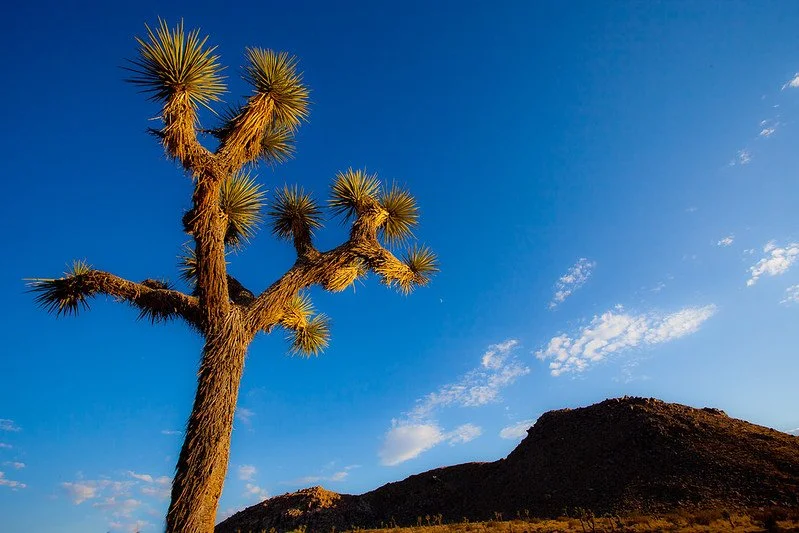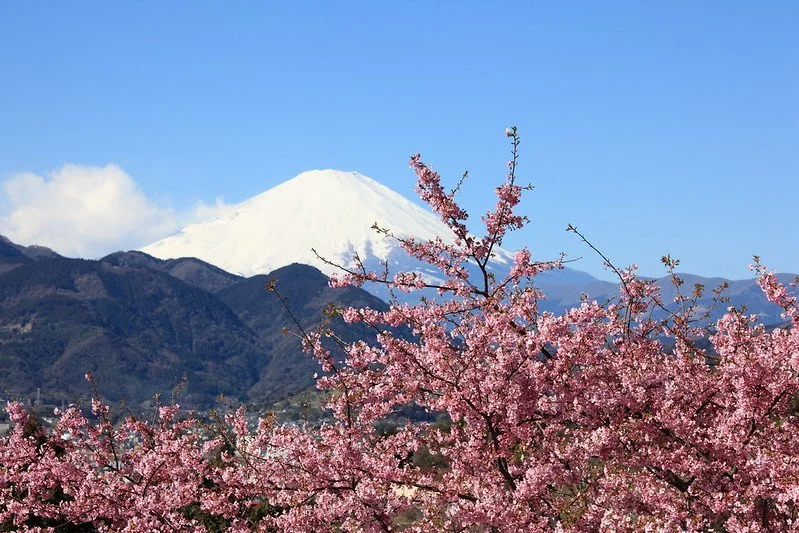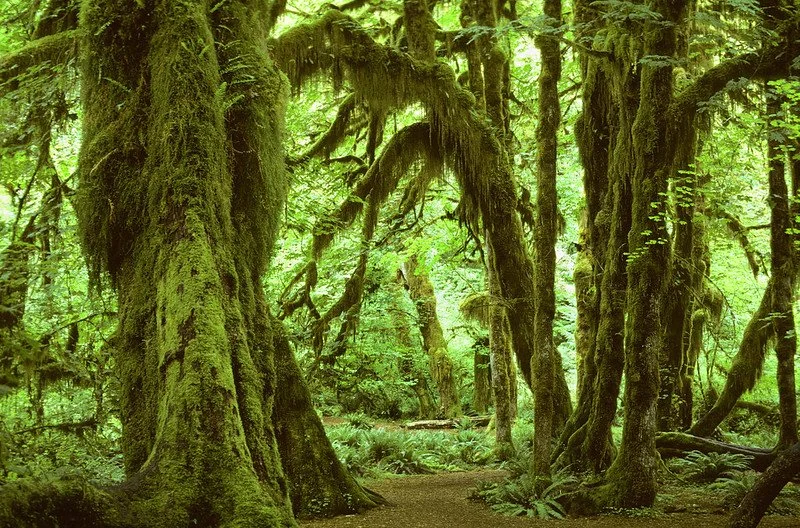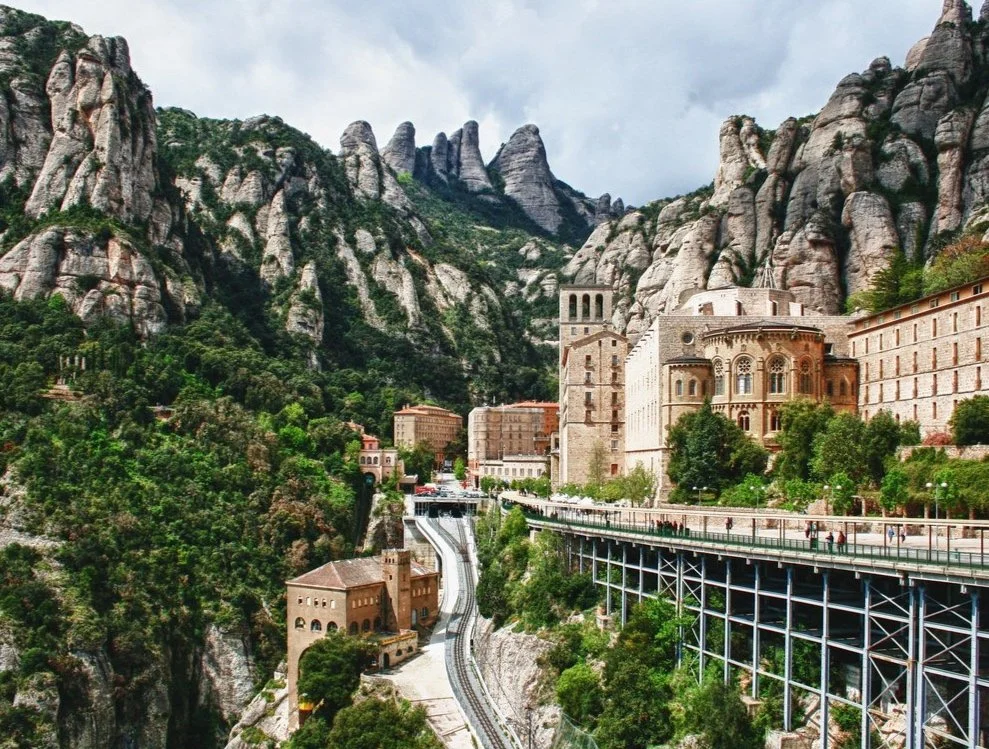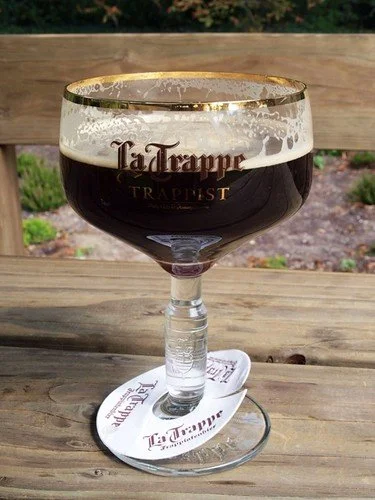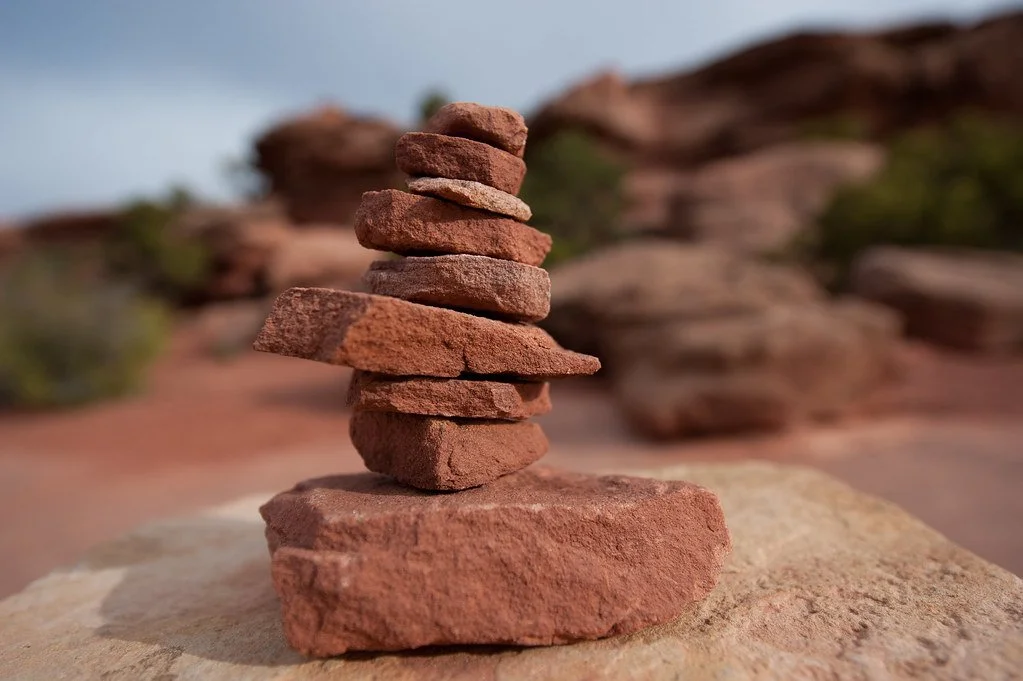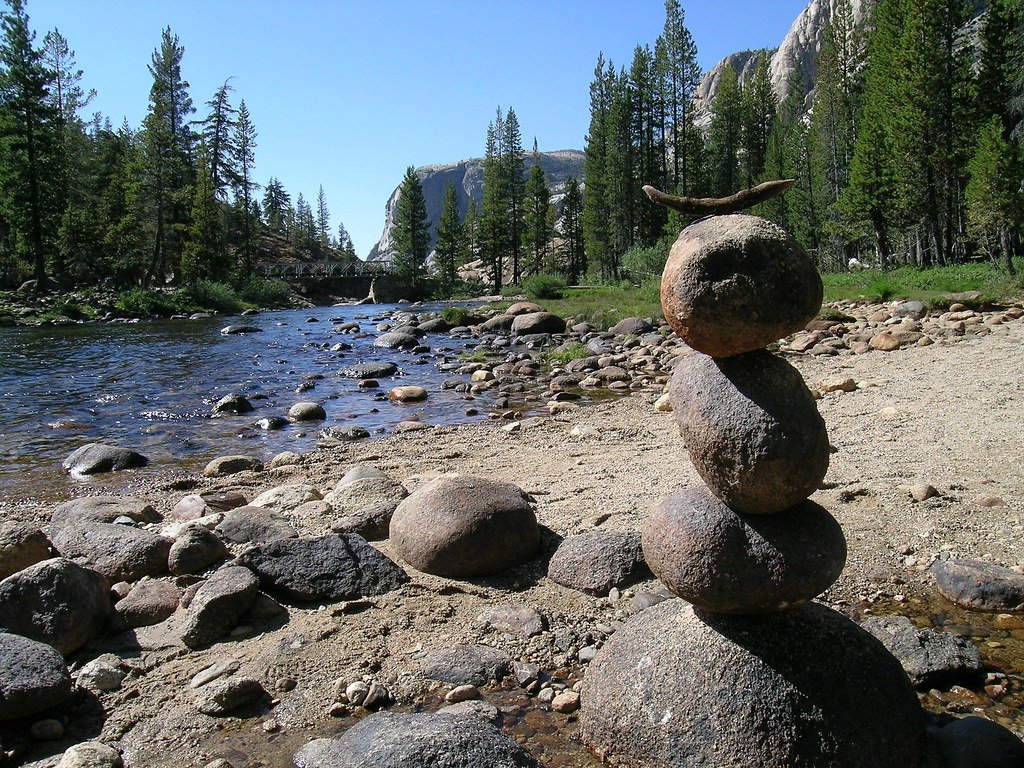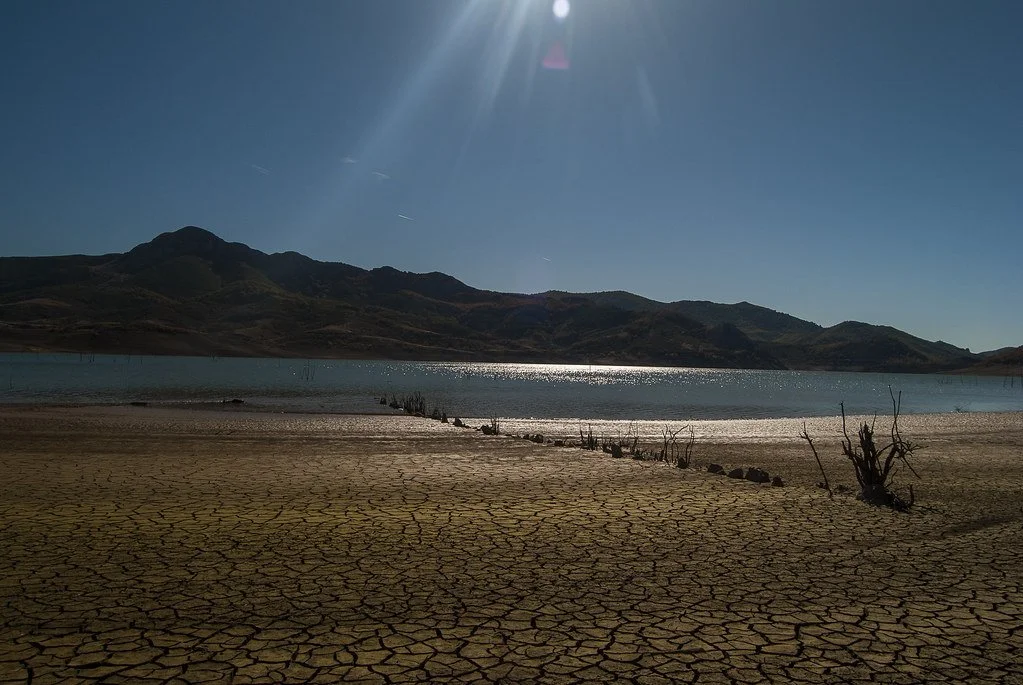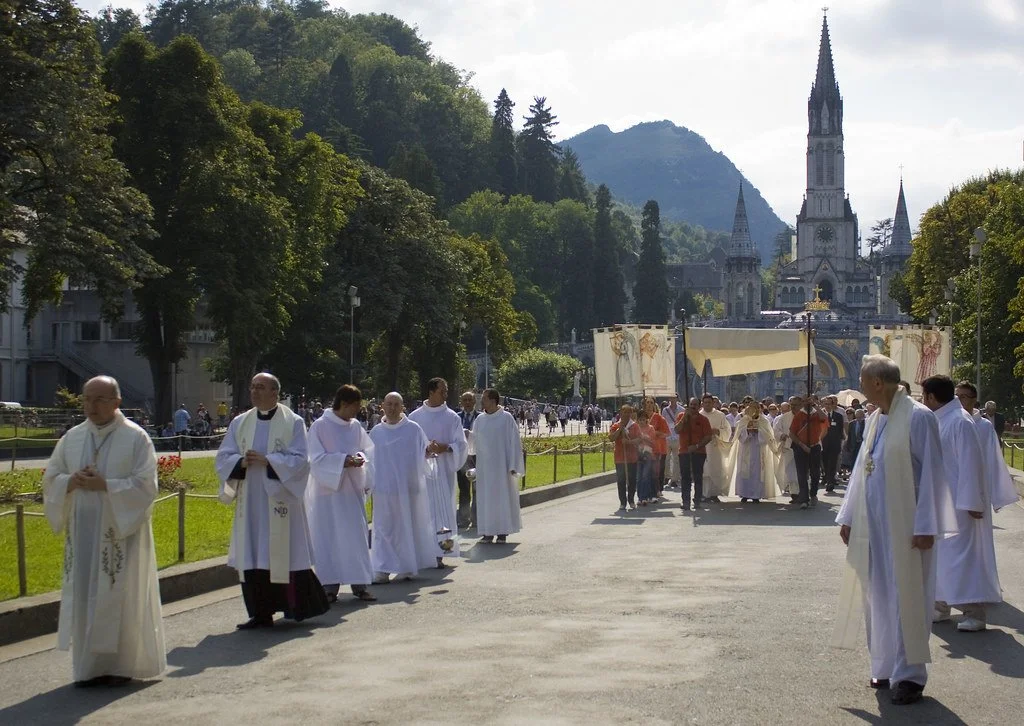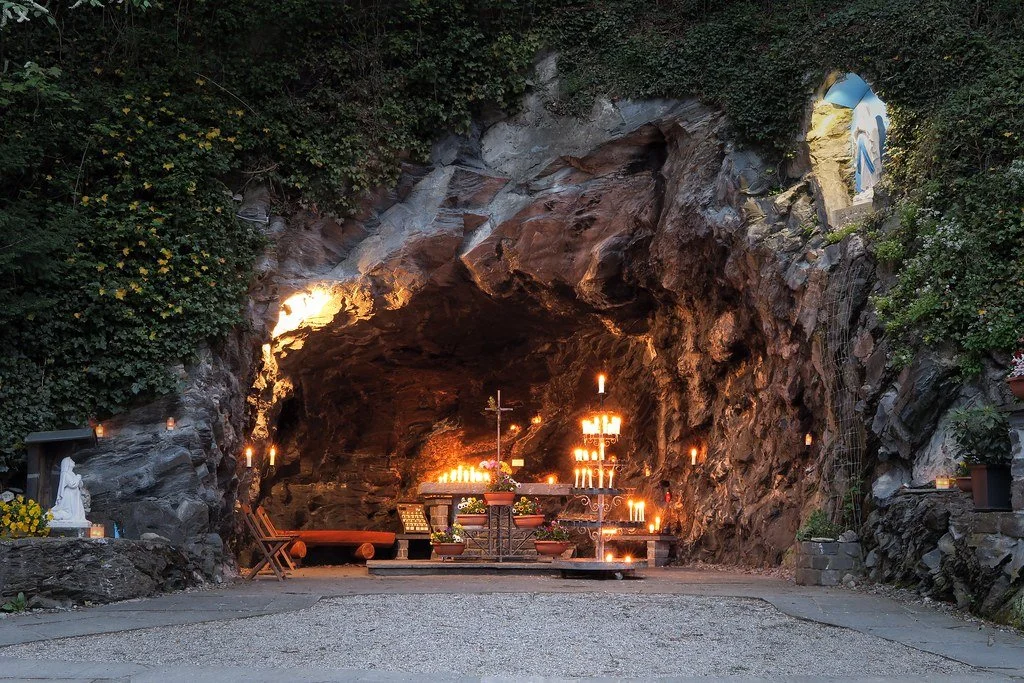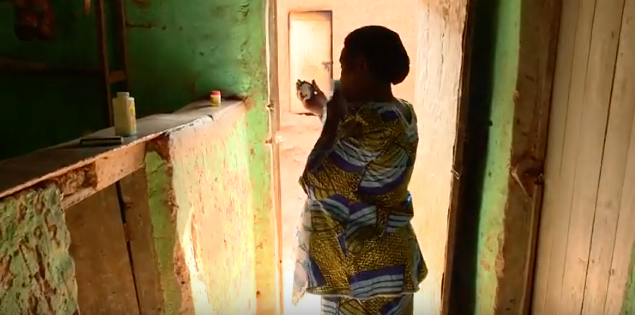This Indian pilgrimage and festival attracts 100 million spirituality-seeking visitors—pilgrims, saints, seekers, philosophers, gurus and disciples. It happens every 12 years at the sacred confluence of Ganges and Yamuna rivers, and the next 6 week event happens in 2025.
Read MoreVIDEO: The Man Behind the World’s Largest Beach Cleanup
In 2015, Versova Beach in Mumbai was little more than a dumping ground for garbage and waste. After witnessing the devastating impact the refuse was having on the ocean, young lawyer Afroz Shah, with the help of 84-year-old neighbor Harbansh Mathur, decided to take matters into their own hands. What started off as a single man’s mission to clean up his favorite childhood beach turned into the world’s largest beach cleanup initiative with 70,000 adult volunteers and 60,000 student volunteers. After three years of work, Shah and hundreds of volunteers had cleaned up over 9 million kilograms of plastic and waste, with hopes to expand their initiative to other beaches in the future. The beach is now clean enough to welcome olive ridley sea turtles ready to lay their eggs to its shores. In 2016, Shah was awarded the UN’s Champions of the Earth award. He is currently working to clean Mithi River, Mumbai’s longest river.
7 Famous Trees of The World
Today, trees face threats such as deforestation, habitat reduction and fires fueled by climate change. Despite it all, these seven tree species continue to symbolize the lands they call home.
Forest in Italy. Giuseppe Costanza. CC0 1.0
As urbanization and overpopulation fuel clearcutting around the globe, these trees stand in their own glory. Granted protection status, having festivals in their honor and attracting admirers from around the world, this is a list of trees that have made a name for themselves and their roots.
1. Baobabs, Madagascar
The Avenue of Baobabs. Zigomar. CC BY-SA 2.0
For many, the Avenue of Baobabs is the first thing that comes to mind when they hear the word "Madagascar." Approximately 50 baobab trees line the dusty road and surrounding groves between Morondava and Belon'i Tsiribihina. Endemic to the island, the trees are referred to as "renala," or "mother of the forest," by locals. The avenue has gained international fame, attracting crowds during sunset and became the first protected natural monument in Madagascar in 2007 when it was granted temporary protection status.
2. Yucca Trees of Joshua Tree State Park, California, USA
YuccaTree in Joshua Tree State Park.Esther Lee. CC BY 2.0
The yucca trees, for which California's Joshua Tree State Park was named, got the nickname “Joshua” from a band of Mormons traveling from Nebraska. The lunar desert climate is ideal for yuccas, which have grown adapted to storing water inside their trunks and twisted branches. They are said to be able to survive on very little rainfall a year, but if the weather happens to bring rain in the spring, the yuccas will give thanks with a sprout of flowers.
3. Cherry Blossoms, Japan
Cherry blossoms at Mount Fuji. Tanaka Juuyo. CC BY 2.0
The cherry blossom, or sakura, is considered the national flower of Japan. Hanami, the Japanese custom of enjoying the flowers, attracts locals and visitors to popular viewing spots across the country during the annual Cherry Blossom Festival. Peak bloom time depends on the weather, and the cherry trees have been flowering earlier and earlier each year due to climate change. On average, the cherry trees reach peak bloom in mid to late March and last around two weeks.
4. Jacaranda Trees, Mexico City, Mexico
Jacaranda trees. Tatters. CC BY-NC 2.0
Every spring, the already vibrant streets of Mexico City are lined with the jacaranda's violet bloom. President Álvaron Obregón commissioned Tatsumi Matsumoto, an imperial landscape architect from Japan, to plant the trees along the city's main avenues in 1920. Matsumoto was the first Japanese immigrant to come to Mexico, arriving a year before the first mass emigration in 1897 and staying until his death in 1955. Today the jacarandas are considered native flowers and symbolize international friendship.
5. Rubber Fig Trees, Meghalaya, India
Double-decker living roots bridge. Ashwin Kumar. CC BY-SA 2.0
Widely considered the wettest region in the world, villagers of the northeast Indian state of Meghalaya are separated by deep valleys and running rivers every monsoon season. The living roots bridges are handmade by the Khasi and Jaintia people with the aerial roots of rubber fig trees. The bridges grow strong as the tree's roots thicken with age, holding more than 50 people and lasting centuries if maintained. The double root bridge, pictured above, is almost 180 years old, stands at 2,400 feet high and suspends 30 meters in length.
6. Argan Trees, Morocco
Goats in an Argania tree. remilozach. CC0 1.0
Built to survive the Saharan climate, Argan trees are endemic to southwestern Morocco. Their scientific name, Argania, is derived from the native Berber language of Shilha (also known as Tashelhit). The trees grow fruits used to make argan oil, an ingredient found in many beauty products. Rights to collect the fruit are controlled by law and village traditions, while several women's co-operatives produce the oil. Goats are frequently photographed climbing argan trees and help in the production process by eating the nuts, leaving the vitamin-rich seeds for the locals to collect.
7. Trees of the Hoh Valley, Washington, USA
Trees in Hoh Valley. James Gaither. CC BY-NC-ND 2.0
On the Pacific side of the Olympic Mountains in the Hoh Rainforest, lush yellow and green moss covers some of North America's giants, including the Sitka Spruce, Red Cedar, Big Leaf Maple and Douglas Fir. As a result of the area's average 140 inches of rainfall per year, the moss is not only enchanting but beneficial. Moss plays an essential role in supporting the forest's biodiversity; like a sponge, it decays, absorbs and finally releases nutrients for the trees’ roots to feed off.
Claire Redden
Claire is a freelance journalist from Chicago, where she received her Bachelor’s of Communications from the University of Illinois. While living and studying in Paris, Claire wrote for the magazine, Toute La Culture. As a freelancer she contributes to travel guides for the up and coming brand, Thalby. She plans to take her skills to London, where she’ll pursue her Master’s of Arts and Lifestyle Journalism at the University of Arts, London College of Communication.
VIDEO: Journey Through Thailand
This footage of Thailand serves as the second installment in Vincent Urban’s series: “In Asia.” The video features glimpses into the vibrant streets of Bangkok and the natural scenery of Northern Thailand. He also features footage from the small but lively town of Pai, located near a mountain base in Northern Thailand. The director includes evocative imagery of Buddhist temples from his visit to the city of Chiang Mai, capital of Chiang Mai province. German director Vincent Urban, based in New York City, concludes the episode teasing his next stop, Laos, for the following installment of the series.
5 Alcoholic Drinks Made By European Monks
Catholic monks throughout Europe make and sell liquors, beers and wines to travelers, using recipes they have cultivated and perfected over centuries.
Different types of Scotch Whisky. Jaygoldman. CC BY-NC-SA 2.0.
Some of the world's major religions prohibit or dissuade their followers from consuming alcohol. Usually, the disapproval of the substance comes from the idea that alcohol consumption leads to addiction, loss of wisdom and more negative outcomes. Buddhist monks condemn alcohol and its consumption. The Quran, the holy text of Islam, prohibits it. Hinduism does not use alcohol in religious contexts but social drinking varies from person to person. But the Catholic faith is inherently linked to the consumption and creation of alcohol.
Jesus’s first miracle was turning water into wine. Wine was biblically said to “gladden the heart of men (Psalm 104:15)” and was consumed for celebrations. Alcohol also takes a central place in many important practices of the Catholic faith; in taking communion, church goers have a sip of wine. Still to this day, Catholic monks across Europe emphasize the importance of alcohol in their faith by continuing the tradition of making it at monasteries and abbeys. However, the alcohol monks make is not typically for sacramental use, but rather commercial sale and consumption. Travelers from across the globe can taste the different liquors, beers and wines made by Catholic monks, each drink having a unique link back to the faith and history as a whole.
1. Chartreuse
Chartreuse Liquor. Jeremy Brooks. CC BY-NC 2.0.
Chartreuse is a French liquor made by the Carthusian monks for more than 200 years. Originally, the liquor was intended to have medicinal properties that extended life spans, but the liquor’s taste popularized it for regular consumption. The liquor’s recipe was given to them by François-Annibal d’Estrées, a French diplomat and soldier, who was closely affiliated with the Catholic Church. The liquor is still made at the monastery located in the Chartreuse Mountains in southeastern France.
Chartreuse is an herbally infused alcohol and is available in both green and yellow colorings. The infused spices leave distinct flavors in the alcohol; herbs like mint, sage and vanilla boldly come through when consumed. Both Green Chartreuse and Yellow Chartreuse vary in flavor, the Green having a strong, almost spicy flavor due to the 130 herbs used to distill it. Yellow Chartreuse is milder and lower in alcohol content, which gives it a sweeter taste when compared to its Green counterpart.
The monks of Grande Chartreuse monastery sell the liquor they make themselves from the distillery they have in Aiguenoire, France, and also from their website. The monks are the only ones who know the real recipe for Chartreuse liquor, making the liquor a coveted asset for craft-cocktail makers. Chartreuse ranges in price, costing anywhere between $50-100, some bottles even exceeding that range.
2. Aromas De Montserrat
The monastery at Montserrat. Bert Kaufmannis. CC BY-SA 2.0.
Aromas de Montserrat is a Spanish herbal wine made by Montserrat Monastery monks. The monastery, located on Montserrat mountain, has been a Catholic practicing monastery for over a century. The monastery is now a place of pilgrimage in Spain, which can be accredited to their possession of the Black Madonna, a statue of the Virgin Mary found in a cave in Montserrat. Known as the patron saint of Catalonia, the Black Madonna brings hundreds of travelers a day to the monastery in the mountains. Besides being a hub for religious history and pilgrimage, the monastery is also known for the wine they make and sell to those who visit.
On the mountain itself, 13 naturally growing spices can be found scattered throughout the foliage. Those who walk or hike the trails of the mountain can smell the rosemary and thyme that clings to the air. Protected by the monastery, and due to its significance as a place of pilgrimage, the only people who have access to the herbs are the monks—visitors are forbidden to pick any spices, and those who do are met with the consequences of heavily enforced conservation laws. However the monks – able to pick the naturally growing spices for their own needs – use the herbs that grow on their mountain to make their famous Spanish wine.
Using 12 of the spices from their land, the monks of Montserrat distill the wine in copper stills, which is then moved into barrels so the liquid can ferment and age properly. Hints of cinnamon, sage, thyme and more can be tasted when enjoying the wine, which is widely sold in Barcelona and the Catalonian region of Spain for around $25. The wine is said to be dry with a spicy—if not overpowering—taste of the herbs used to distill it.
3. Trappist Beer
Trappist Beer. French Disko. CC BY-NC-SA 2.0.
Trappist beer is brewed by Trappist monks, who practice Catholicism in monasteries and abbeys across the globe. Trappist beer is made in 14 different monasteries, most of which are spread across Europe—only one residing in the United States. Other countries with Trappist monasteries include Belgium, the Netherlands, Austria, Italy, England, Spain and France.
The production of trappist beer is regulated by the International Trappist Association (ITA), which connects the many Trappist branches and promotes the sale and production of the beer they make. The ITA lists the specific parameters that must be met in order to brew and sell Trappist beer, and if such criteria is met, the ITA stamps the beer as an Authentic Trappist Product (ATP). Trappist beer must be made within the walls of a Trappist Abbey, monks must conduct all of the production themselves, and the profits may only be used to meet any needs in the community.
Most of the abbeys that make Trappist beer allow tours of the breweries and allow travelers to sample and purchase the beer directly from the monastery. Each monastery produces its own unique beer, so travelers who visit different abbeys may encounter a completely new drinking experience each time.
The taste is described by Home Brew Journals as “malty, bready, sweet, spicy” and is said to come in fruit flavors such as apple, cherry and pear.
4. Aqua Vitae (Scotch Whisky)
Lindores Abbey Distillery sign. Dave Paterson. CC BY 2.0.
Monk Friar John Cor, who coined the term “aqua vitae,” or “water of life,” created what we know today to be Scotch Whisky. Lindores Abbey, the birthplace of Scotch Whisky and where Friar John practiced his devout faith, is still a place where Scotch Whisky is distilled. Although the whisky’s recipe comes from the monks, it is now made by a distillery company. However, Lindores Abbey Distillery, headed by Andrew McKenzie Smith, uses the original recipe for Scotch Whisky to perfect and produce its product, keeping with the monks’ original centuries-old practices.
Lindores, dubbed “the spiritual home of Scotch Whisky,” was the place McKenzie Smith decided to build his new distillery. Smith also plans to use fruit from the abbey’s orchard to flavor the whisky in the future. The liquor is now being sold under the name Lindores Scotch Whisky, an ode to the abbey that housed the creators of the liquor.
Scotch Whisky is described as smooth and silky. It has citrus hints, coupled with fruity undertones and flavors. The aftertaste is said to be smoky and sweet. Travelers can visit the distillery, which is right across the street from the abbey. Travelers can explore this too, but Lindores Abbey is practically ruins now, having not been maintained or used for many years. Those who wish to try the whisky on location can, and those who wish to purchase a bottle of Lindores for themselves can do so for around $50.
5. Buckfast Tonic Wine
Buckfast Bottle on the Street. BinaryApe. CC BY 2.0.
Buckfast tonic wine is produced by monks at Buckfast Abbey in England. The wine is made with caffeine, and The Guardian states “each bottle contains around eight times the caffeine of a can of coke.” The properties of this wine, being 15% alcohol and pumped with caffeine, are said to cause those who drink it to get high rather than drunk. Such effects of Buckfast wine have led to increased crime in certain areas of Europe, but Buckfast monks are rejecting the opinion that their wine is to blame. Monks at the abbey claim that the wine is not made to be abused, and that binge-drinking is the real problem. In Scotland, where the wine gained prominence due to its similarity to communion wine, crime is heavily attributed to the wine. Now used recreationally, an area in Scotland dubbed the Buckfast Triangle attributes for nearly 10% of the wine’s sales. , . Additionally, nearly 7,000 crime reports in that area are connected to the overconsumption of Buckfast wine..
Buckfast Abbey in England is open for church visits, mass and tours of the monastery. The wine is sold globally and can be purchased for around $20 a bottle. Vice describes the flavor of Buckfast as “syrup-thick,” tasting like “a palatable mixture of berry-flavored cola and cough medicine.” Buckfast is the perfect drink for those looking to be adventurous, while also being willing to walk the line between daring and dangerous.
Ava Mamary
Ava is an undergraduate student at the University of Illinois, double majoring in English and Communications. At school, she Web Writes about music for a student-run radio station. She is also an avid backpacker, which is where her passion for travel and the outdoors comes from. She is very passionate about social justice issues, specifically those involving women’s rights, and is excited to write content about social action across the globe.
Why Creating Rock Cairns is Dangerous and Wildly Illegal
Amplified by the social media trend of making and photographing these little towers, the prevalence of man-made rock cairns has reached an all-time high. But the illegal practice poses serious dangers to the surrounding environment.
A rock cairn. CanyonlandsNPS. CC PDM 1.0.
Trending on social media platforms like Instagram, “rock stacking” has become the latest nature fad. Seen as a challenge, those making their way through nature—whether it be at a park, a beach, a pond or elsewhere—have created a habit of creating these cairns or adding to pre-existing ones. People have even linked this habit to spirituality and luck, saying the higher the stack grows, the more luck a person has if they have added to the pile and that the practice grants them inner balance. But what might seem like a harmless human hobby is anything but that. With a plethora of environmental impacts, the ever-increasing number of rock cairns in our natural environment threatens the structure of multiple ecosystems, while also posing threats to the very humans who created them.
After the COVID-19 pandemic hit the United States, outdoor activities that accommodated for safe social distancing became a popular way to get out of the house. The Guardian reports that the National Parks Conservation Association noted a 20% increase in visitation at all national parks locations. With this uptake in visitation came the human impact on the land. Being uneducated in policies such as Leave No Trace (a principle that emphasizes the importance of humans to make as minimal an impact on nature as possible) and a severe lack of outdoor etiquette was instrumental in the rise in rock cairns.
Grand Canyon National Park visitors. Grand Canyon NPS. CC BY 2.0.
The environmental effects of rock cairns are the most threatening of the practice. Cairns made by water sources are among the worst, due to their impact on the surrounding food chain and ecosystems. Rocks disturbed by the side of a river, the edge of a pond, or even a lake, have devastating consequences on the animals that live there. Taking rocks from those areas, people dishevel the homes of macroinvertebrates, which are at the very basis of practically all freshwater food chains in the world. These little creatures provide a list of very important services, including keeping the water they inhabit clean by scavenging dead fish, plants and harmful bacteria, making them nutritious sources of food for animals in the area.
Without macroinvertebrates, our freshwater systems would not be able to self regulate, and the food chain—and ecosystems involved—would essentially crumble. By taking rocks from freshwater areas, people are stealing homes from these crucial creatures and inherently ruining entire ecosystems just to stack a few rocks. Additionally, other freshwater creatures feel the direct loss of habitat that the macroinvertebrates experience. Crayfish, algae, insect larvae and snails all lose homes to these cairns, all endangering these animals. Finally, the same threats that freshwater ecosystems face due to rock stacking can be seen in land environments. Reptiles, bugs and small mammals lose their natural habitats and plants are uprooted and disturbed.
Rock stack by a river. Angela7dreams. CC BY-NC 2.0.
In addition, rock cairns also pose threats to humans. Known to cause soil erosion, if rocks are being taken from the wrong places, large chunks of earth can become loose, leading to rock and mudslides. Further, large cairns, commonly found on mountain peaks and summits, have been known to fall over hillsides and hit hikers below.
The dangers of these cairns have made them illegal to make, unless done professionally by a park ranger. The penalties for making these cairns are equivalent to those for vandalism. Dubbed “rock graffiti,'' cairns are considered malicious mischief and warrant hefty fines that vary depending on location, and in some instances, rock stacking is punishable by jail time. Sometimes, when there is no other way to mark a trail path, rangers will make these cairns, having been trained to do so without disturbing the environment. However, those who make them for fun have been said to lead people the wrong way on hikes or walks. Because of the uptake in rescues, and all the other factors listed above, this practice of stacking rocks has been prohibited in national parks.
To Get Involved
If you ever come across a rock cairn, the National Parks Service (NPS) advises you to leave them be. The NPS asks that people do not disturb pre-existing cairns, do not add to them and especially refrain from building them. To read more about rock cairns from the NPS, click here.
Ava Mamary
Ava is an undergraduate student at the University of Illinois, double majoring in English and Communications. At school, she Web Writes about music for a student-run radio station. She is also an avid backpacker, which is where her passion for travel and the outdoors comes from. She is very passionate about social justice issues, specifically those involving women’s rights, and is excited to write content about social action across the globe.
Donating Used Clothing May Do More Harm Than Good
Donated clothes rarely end up in the hands of someone who needs them. Instead, they usually end up in landfills or overwhelming already struggling industries.
Landfill in Kenya. Thad K. CC BY-SA 2.0.
Many Americans assume donating is the best thing they could do with their old, unwanted clothing. However, in reality, more than 80% of donated clothing ends up in landfills. Only clothing in the best condition is accepted into secondhand stores in the U.S., such as Goodwill or Buffalo Exchange. Even then, if the clothing remains in the store without being purchased for weeks at a time, the store itself often disposes of it. The rejected clothing often ends up in landfills or is shipped overseas.
Americans buy five times as much clothing, on average, than they did 30 years ago. However, the quality of the clothing most people buy has decreased due to fast fashion trend cycles, resulting in an average of only seven wears per piece. The increase in purchasing combined with the decrease in wear time has resulted in an overwhelming influx of clothing donations in the past 30 years.
In theory, shipping unwanted clothing to countries seems like a good thing; it has the potential to create jobs and provide more affordable clothing. Unfortunately, many countries (mostly in East Africa, where unwanted clothes are most commonly sent to, with the exception of Ghana) cannot handle the sheer mass of the clothing they are receiving. The U.S. ships up to 700,000 tons of clothing overseas every year, which is simply too much for the textile and clothing industries to disperse. Additionally, secondhand clothing sells for such a small fraction compared to new clothing in East Africa, causing local companies unable to compete with cheap clothing to go out of business.
Clothing Donation Stop. Laura0509. CC BY-SA 2.0.
Several East African countries (Tanzania, Kenya, Uganda, Burundi and Rwanda) even signed a ban on the importation of used clothing from the U.S. in 2016. The Trump administration negotiated with the East African Community (EAC) to reverse the ban, which they did, mostly due to international pressure. With that being said, certain countries, such as Kenya, claim to rely on the influx of clothing from the U.S. to keep their textile industry up and running. But while that is the case for Kenya, donated clothing does more harm than good for the majority of East African countries.
In terms of the environment, secondhand clothing markets in every country in the world are simply unable to keep up with the amount of discarded clothing as the fast fashion industry continues to ramp up production exponentially. Whether the clothing begins its journey in a thrift store in the U.S. or on a plane to Kenya, it is ultimately most likely to end up creating more waste. The myth of clothing donation is part of what propels the fast fashion industry; people think donating their clothes will have an ultimately positive impact, and so they feel justified in continuing to amass more clothing.
Ultimately, the most effective fix for this problem would be to reduce collective clothing consumption. The less unnecessary clothing that is bought, the less clothing waste will be produced. With that being said, there are other options to reduce your clothing waste. Instead of donating your unwanted clothing, giving it directly to someone that you know wants and will use it ensures that it won’t end up in a landfill, at least in the short-term. Donating your clothing to homeless or women’s shelters is also another option, as they have more need than thrift stores such as Goodwill or Salvation Army. However, even when it comes to donating clothing to shelters, the clothing must be in good enough condition to actually be worn. If it’s not, another option is to keep and repurpose it yourself. Old fabric can be used as stuffing or kept for a future art project. All in all, donating excess clothing can be the last resort, which comes after making an effort to buy less, trade within your own circles and repurpose used materials.
Calliana Leff
Calliana is currently an undergraduate student at Boston University majoring in English and minoring in psychology. She is passionate about sustainability and traveling in an ethical and respectful way. She hopes to continue her writing career and see more of the world after she graduates.
Travel and Work for Food on Organic Farms
Organic farms look for travelers to help in exchange for housing, meals and an opportunity to learn—providing a unique mode of affordable, ethical travel.
Organic farm in Cyprus, Greece. George M. Groutas. CC BY 2.0.
Worldwide Opportunities on Organic Farms (WWOOF) is the most widespread and popular organization that pairs people interested in volunteering on organic farms throughout the world with host families who run their own organic farms. The idea is that volunteers would be just that: unpaid volunteers, who work part-time on a close-knit and often family-run farm in exchange for free housing and meals with the family. In fact, WWOOF bans any exchange of money between the host and the volunteer. Often, these volunteer stints are short (a few weeks) or part-time, allowing for the volunteer to obtain paid work and/or spend time exploring the area they are living in while also growing the food they will eat during their stay, immersing themselves in culture, helping a local organization and learning from experienced farmers. Below are some detailed opportunities from every continent in the world.
North America: Consecon, Canada
Stonefield Alpaca Farm in Consecon, Canada is a 100-acre family-owned and operated farm powered by solar panels and windmills. The owners are looking for volunteers to help maintain the straw bale home they built together, grow their own food and take care of the animals (alpacas and poultry). They hope to become completely self-sufficient in terms of food, and that volunteers can help them do so while also learning from them and exploring Ontario. Learn more here.
South America: Belize City, Belize
An individual who bought and began his own 14-acre pesticide-free, organic farm in Belize City, Belize offers an opportunity to help develop his farm further in terms of sustainable energy production and other sustainable farming methods. He became a host because he was a WWOOF participant in the past. His farm has goats, monkeys, parrots and sheep. Responsibilities would include taking care of the animals, gardening, landscaping and sharing ideas on how to improve the farm’s organic practices. Learn more here.
Africa: Apam, Ghana
This family-owned farm in Apam, Ghana is not only a farm located on the coast, in the center of a fishing community, but also an educational and charitable center focused on agriculture and helping the larger community. The hosts are looking for volunteers to help with typical farming tasks, such as taking care of animals and harvesting, as well as build ecological houses and participate in the local fishing. This is a unique opportunity to not only help the environment and one local family, but the entire community as well. Learn more here.
Australia: Upper Kangaroo River
Winderong Farm is a cooperation of 10-15 employees and volunteers working together to revive their surrounding environment in Upper Kangaroo River, Australia. They’re looking for volunteers interested in conservation to work on composting, permaculture and regeneration of the Australian bush. This farm differs from most as it is a larger, community-based effort as opposed to a small family-run farm. Learn more here.
Asia: Kampot, Cambodia
Nakupenda Farm in Kampot, Cambodia is a family and community farm focused on sustainability. They are completely sustainable in terms of energy and are working towards growing all of their own food. They would like volunteers to help harvest food and help them reach their goal of becoming entirely self-sufficient. They have also worked on projects in the past such as building earth houses and solar dehydrators, which dry fruits and vegetables to preserve them. Nakupenda Farm sits on 3.5 acres of land. Learn more here.
Passive solar dehydrator. Colleen Taugher. CC BY 2.0.
Europe: Hvolsvöllur, Iceland
The Farm Buland is a certified organic dairy farm run by three generations of one family. They would primarily be looking for help with the cows and other livestock, such as chicken, horses and sheepdogs. The owner is passionate about environmentalism and has studied natural healing and medicine. They have over 50 humanely treated cows, providing an opportunity to work on a large-scale ethical and organic farm. Learn more here.
These are only a few examples of the types of farms looking for volunteers; there are hundreds of local and family-owned farms all over the globe searching for people passionate about agriculture and the environment to help them while learning from their experience. In addition to WWOOF, potential volunteers can find more opportunities through similar organizations like World Packers, as well as through the websites of individual independent farms on the lookout for volunteers, such as Red Hook Farm.
Calliana Leff
Calliana is currently an undergraduate student at Boston University majoring in English and minoring in psychology. She is passionate about sustainability and traveling in an ethical and respectful way. She hopes to continue her writing career and see more of the world after she graduates.
Drought, Agriculture and the Water Crisis in Spain
In Spain, where drought and agricultural contaminants are affecting drinking water, the precious resource has become a rarity.
The drought’s effects on water in Spain. Oscar F. Hevia. CC BY-NC-ND 2.0.
After one of the driest winters of the past 20 years, Spain is experiencing record-low levels of water, which has severely impacted the country’s people. Spain collects the majority of its water through reservoirs and basins, which capture groundwater and rain. At this time of year, these reservoirs are typically at 70 percent. However, due to the drought Spain is currently experiencing, such reservoirs and basins are only at about 40 percent capacity—a palpable cause for concern for all Spanish citizens.
Due to the severe lack of water, Spain has placed regulations on what the limited supply should be used for. Pools remain unfilled as the weather gets hotter, city fountains are shut off, and villagers in towns closer to the interior of the country find it hard to get a sustainable supply of drinkable water. Villagers from interior areas of Spain, like Lastras de Cuéllar, depend heavily on bottled water sold in their town square. But the purchasing of bottled water is not a sustainable solution to the current water crisis. Older members of the community struggle to carry enough back home, and although many places discount their prices, bottled water is not cost effective. As summer approaches, the people of Spain worry about how long their reserves will last them and hope for heavier rainfall in the spring months to come.
The drought is being credited to climate change, and the ever-rising temperatures felt across the globe are now creating drastic impacts on the ways people will have to start managing their resources. Calls for water-management reform have begun from many scientists in Spain, the main argument being that due to rising temperatures, old ways of managing and transporting drinking water may need to change. Interior towns of the country that heavily depend on rain water to sustain them may have to rethink their system all together.
Park fountain without water. Ell Brown. CC BY-NC-SA 2.0.
On top of the drought, agricultural contaminants have threatened what little water resources Spain has left. Spain is a global leader in pork production, a process that actively affects groundwater resources commonly collected in the basins used to hold drinking water. Pig manure is loaded with toxins that make drinking this groundwater very dangerous. Wired Magazine explains that “pig feed is high in a chemical called phytate, which swine excrete as phosphorus.” When farmers use pig manure to fertilize their land, “phosphorus can become concentrated in the soil and leach to groundwater.” This concentrated phosphorus in groundwater can make humans extremely sick, another reason why clean water has become so rare in Spain.
Besides phosphorus, pig manure also secretes nitrates, something also commonly found in fertilizers used in the agricultural production of crops. Therefore, on top of the dangerous toxins found in pig manure, the nitrates in fertilizer are also seeping into groundwater and impacting the purity of Spain’s limited drinking water. The Local, an online magazine dedicated to covering news in European countries, states that “22 percent of Spain’s overall surface area…is exposed to nitrate pollution,” a startling statistic, considering Spain’s clean water crisis.
The implications of the drought—combined with the continuation of agricultural contaminants that are consistently finding their way into Spain’s drinking water—are extremely severe. If Spain doesn’t experience a spring with heavy rainfall, this issue may turn into a crisis. Spain has been for many years a water-insecure region, but as the effects of climate change excellerate and agricultural production continues to pollute the land, the issue only becomes more dire. For now, Spaniards can only hope for rain to counter the drought, and for water-management reform to make their drinking water safer. With those hopes in mind, they wait to see what the impending summer heat will mean for their depleted clean water supply.
To Get Involved:
The Organization for Economic Co-operation and Development (OECD) is an organization designed to assist economic and trade progress on a global scale. Learn about the OECD’s assessment of how water resources in Spain are allocated and how the OECD recommends to improve such allocations as conditions in Spain change here.
Circle of Blue is a non-profit organization dedicated to discussing critical research and the challenges involved with global water insecurity. Uniting journalism and data literacy, Circle of Blue serves to educate readers on global issues linked to water and provide research on ways others can get involved to fight global water insecurity. Learn more on how to eliminate global water insecurity here.
Ava Mamary
Ava is an undergraduate student at the University of Illinois, double majoring in English and Communications. At school, she Web Writes about music for a student-run radio station. She is also an avid backpacker, which is where her passion for travel and the outdoors comes from. She is very passionate about social justice issues, specifically those involving women’s rights, and is excited to write content about social action across the globe.
TikTok Creator Highlights Living Near North Pole
Living with no running water, and four months of complete darkness sounds like an extreme way of living for most of us, but for Tik Tok creator Cecilia Blomdhal it is her daily normal. By showing her minimalist living in the most extreme conditions she has gained her over a million followers.
Mass Killings of the Gray Wolf near Yellowstone
With the 150th anniversary of Yellowstone, attention is drawn to the mass killings of the gray wolf. The park’s bordering states have no laws to protect this species, as the wolves reach a record low number.
Gray wolf traveling. Yellowstone National Park. CC BY-SA 2.0.
March 1 marked the 150 years of Yellowstone National Park’s existence. However, a sad reality emerges regarding the hunting and killing of wolves. Although this event should be a time of commemoration for the park, an impending issue may finally be getting the necessary public attention.
While hunting is illegal within Yellowstone, the boundaries of the park line states like Montana, Idaho and Wyoming, which offer no protection to what crosses into their private territory. As a result, the highest number of gray wolf killings has occurred within a century this season alone, which is less than halfway over.
There are several reasons why this attack on the gray wolf has been escalating. In 2020, the Trump Administration abolished protection of the gray wolf species, meaning that they no longer receive protection as an endangered species. Two years later, though, the federal court worked to reinstate protection for the wolves. Although this preservation was successful in some states, those bordering Yellowstone were excused from this active protection. As a result, hunters in Montana, Idaho and Wyoming have brought the total population down to just 90 wolves.
Although there are strict hunting rules within Yellowstone, they now hold little value due to the ways in which these bordering states support the war on wolves. These mass killings are not only exponentially growing for the first time in a century, but pose extreme risks for the balance of the ecosystem. The gray wolf plays a key role in the ecosystem, which further affects the physical environment the park is surrounded with, as well as the stability of other organisms.
For example, the diminishing number of wolves negatively impacts the ecosystem as the species feeds on deer and elk populations, keeping them at a healthy population. When wolves eat deer or elk, they also leave their carcasses scattered which provides nutrients for other members of the system. Aside from the gray wolf affecting other species, they have large impacts on trees, plants and the physical environment at large. With the absence of the gray wolf working as predators, an abundance of elk would feed on different types of trees, which further translates into the stagnation of the species.
The issue is growing rapidly, as the entire Phantom Lake Pack has been slaughtered due to the lack of protection. New laws in Idaho encourage these killings; the governor of Montana is an active hunter himself who recently trapped and killed a wolf without following protocol. As these states fail to protect the important wildlife that walks into their territory, it is increasingly concerning why there is little to no federal concern on this issue.
Those who demand change are former members of the Fish and Wildlife Commission, who have seemingly followed the journey of the gray wolf, watching them go from full protection to total vulnerability. Although gray wolf deaths reach dangerous numbers, the problem is seemingly insular to the park itself, only being made known to the outside when action is demanded. When there is no personal connection between the park and the outside influences that have ability to make a change, protection is only considered when irreversible ecological damage to the park is noticed. Whether the federal government and commission chooses to protect the gray wolves or not is ultimately determined by their care for the environment, economics and the ecological community.
GET INVOLVED
Citizens can put active pressure on the federal government and commission to keep the Endangered Species Act protections for gray wolves in 48 states throughout the Biden Administration. This pressure would also help the wolves have protection under federal law, rather than leaving responsibility to the surrounding states.
Here, you can sign a petition to Secretary Haaland to promote this protection of wolves.
Talia Rueda
Talia is an English major and Marketing minor at Providence College. She works as a Staff Writer and Social Media Coordinator for their student-led newspaper, The Cowl. She is a lover of all things entertainment media and is happy to now grow her experience in writing about social action and travel. In the future, she hopes to work for a major entertainment magazine to continue the conversation about growing trends and popular culture.
Trail Angels and Trail Magic on the Appalachian Trail
As thru-hikers backpack the Appalachian Trail from Maine to Georgia, people dedicated to assisting the hiking community volunteer their time to perform services to the hikers who need it most.
The Appalachian Trail in the fall. Nicholas T. CC BY 2.0.
Sporadically stationed along the Appalachian Trail (AT)—a hike that spans through 14 states starting in Maine and coming down through Georgia—volunteers dubbed “Trail Angels” set up to assist thru-hikers on their journey across the mountains.
The Appalachian Mountain Range has become one of the three major hiking trails in the U.S. and a welcome challenge for some of the most experienced backpackers in the country. The Appalachian Trail Conservatory (ATC) website states the trail is over 2,190 miles, and to do it in one trip “typically takes five to seven months.” Despite the challenge, thru-hikers travel in droves to attempt the AT every year, facing the physical and mental fatigue that accompanies months of full-day hikes, low calorie meals and poor sleeping and hygiene conditions. But in tests of true strength, a little help is always welcome, and the thru-hiking community shows an aptitude for providing some magic just when it’s needed most.
A thru-hiker on his journey. @Zen. CC BY-NC-SA 2.0.
Trail Angels are volunteers who provide free services to thru-hikers during their journey across the mountains, a fitting name for their selfless acts of kindness. Trail Angels typically provide what has been called Trail Magic. The Appalachian Trail Conservatory explains Trail Magic as “finding what you need most when you least expect it,” emulating why the work Trail Angels do is so special; it is an unexpected surprise in an environment where everyday is so monotonous - hiking, eating, camping and repeating the process for days on end. Further, in stretches of the Appalachian Trail where the terrain is most daunting, Trail Magic can make a world of difference to thru-hikers contemplating quitting or even more severely, thru-hikers in desperate, life-or-death need of food, water, or shelter.
The services Trail Angels provide generally reside within three realms: food services, ride and supply services, and general care. The ATC explains the phenomena of “hiker feeds”, which is when Angels set up a station along the trail or near trailheads and provide hot meals, beverages, fruit and more to help feed any ravenous backpackers. Additionally, Trail Angels will provide ride services into town for any much needed supplies, including food, propane tanks used for portable stoves and hygiene products. As well as providing Magic on the Trail, Angels occasionally facilitate off-trail services, allowing hikers to spend the night in their personal homes so they can get much needed sleep and hygienic care.
Trail Angel leaving some Magic. @Cyclotourist. CC BY-NC 2.0.
Chatrooms, Facebook groups and Twitter accounts have all been made to connect Trail Angels with thru-hikers in need. Although Trail Magic is typically an unexpected surprise, hikers can occasionally request help during their hike from those willing to give it. The Trail Angel List is a collective organization that specializes in connecting hikers with those wishing to help them. In their online forum, folks can be seen offering their services to the thru-hiking community.
Most Trail Angels have personal connections, linking their service on the AT with experiences they or a family member has had while backpacking. On the forum, folks like Stan Mordensky write, “I became a Trail Angel well before the summer of 2013 when my son was a thru-hiker on the AT,” following up his post by saying he teaches high-adventure skills and drives around the New Jersey-Pennsylvania border area to help thru-hikers in need. Another thru-hiker, Megan Lynne, states “I have been an avid high-altitude climber…and would like to help with rides, meals…lodging, laundry, showers,” connecting her own past with hiking to her reasons for service to the AT community.
Alongside the veteran-hikers-turned-Trail-Angels, there are also numerous people on forums such as The Trail Angels List that do this work for no plausible reason at all. Maybe they enjoy volunteering in a community so thankful for any help they are given or they like inspiring hikers to continue on with their journey. Maybe they enjoy listening to the stories of the people they meet along the way. Regardless of the reason, no matter the motivation, it is undeniable that Trail Angels are at the heart of the thru-hiking community and demonstrate the power of selfless, genuine community service.
Ava Mamary
Ava is an undergraduate student at the University of Illinois, double majoring in English and Communications. At school, she web writes about music for a student-run radio station. She is also an avid backpacker, which is where her passion for travel and the outdoors comes from. She is very passionate about social justice issues, specifically those involving women’s rights, and is excited to write content about social action across the globe.
VIDEO: Girl's Education and Global Poverty
Global Citizen provides an array of statistics to demonstrate the power of education for girls in ending global poverty. For example, when 10% more girls attend school, the GDP of a country increases by 3% on average. The film especially focuses on India and explains that education helps to prevent girls from entering early marriages. Two thirds of uneducated children are girls. By providing girls with the education that they need, countries can both improve their economies and their standard of living for girls and women.
GET INVOLVED
Global Citizen is an organization that aims to help end poverty around the world by 2030. The foundation addresses the issues of demanding equity, defending the planet and defeating poverty. According to Global Citizen, 36% of the population currently lives in extreme poverty. To raise awareness and educate yourself about global poverty, click here.
A Pilgrimage to Lourdes: Why a Tiny Town in France Attracts so Many Visitors
Every year, 6 million pilgrims descend upon the town of Lourdes. Explore how the town’s history and developments in the Catholic Church made it so popular.
Lourdes Eucharistic Procession. Lawrence OP. CC BY-NC-ND 2.0.
In 1858, 14-year-old Bernadette Soubirous, purportedly saw visions of the Virgin Mary by a spring in Lourdes, a tiny French town in a remote corner of the Pyrenees Mountains. It was almost unbelievable that the Virgin Mary decided to reveal herself to Soubirous, a poverty-stricken, sickly, illiterate girl. The town was immediately thrown into upheaval, with some questioning the veracity of the apparitions and others trying to see the sight themselves. Nobody else besides Soubirous ever saw the apparitions. But the spring besides the Grotto where she saw the apparitions was later revealed to have healing powers. The town was put on the map, and pilgrimages started soon after, continuing to this day.
The story of how Lourdes became so popular is intricately linked to the developments in the Catholic Church. After the horrors of the French Revolution, Catholics found solace in miracles, pilgrimages and processions. The 19th century was an era of Catholic revival, with an increase in devotion to the Virgin Mary. In 1854, Pope Pius IX proclaimed the dogma of the Immaculate Conception of Mary, meaning Mary was preserved from original sin. The appearance of Mary just four years after that proclamation threw the town into great excitement. The apparitions at Lourdes and the subsequent pilgrimages fit into the pattern of Catholic revival of the time.
That century also saw the consolidation of papal power in Rome. Papal authority became more prominent as Catholics became increasingly loyal to Rome. While there were other alleged Marian apparitions reported in the 19th century, Lourdes became the most famous because it had the Vatican stamp of approval. Pope Pius IX declared Lourdes an official pilgrimage site in 1876, demonstrating the increasingly tight link of remote villages to Rome.
The pilgrimages to Lourdes also reflect the expanding reach of the globalizing Catholic Church. Pilgrims going to Lourdes were not limited to Europeans; they came from all over the world. According to John T. McGreevy, a Bengali journalist made the trip to Lourdes and found “infallible proof” of God. Vietnamese soldiers in France during World War I toured Lourdes soon after their arrival. The diverse group of people who visit Lourdes show that the Catholic Church has become a transnational institution.
Lourdes Grotto. Kecko. CC BY 2.0.
Not only did the diverse array of visitors reflect the globalization of the Catholic Church, but the export of Lourdes to places around the world proved the same. Not long after people first became fascinated with Lourdes, aspects of Lourdes diffused to the home countries of visitors. The result was the creation of numerous replicas of Lourdes Grottos around the world, from the Vatican Gardens to Northern Indiana to Aruba.
Today, Lourdes is a vibrant community—much more than the sleepy village of 1858—that attracts 6 million visitors annually from around the world. But tradition is still observed. Catholic Masses take place daily in the Sanctuary of Our Lady of Lourdes, and processions are still a common occurrence. People bathe in the water from the springs, hoping for a miraculous healing. Despite the global reach of the village of Lourdes, it still manages to preserve the Catholicism that brought it to fame.
Bryan Fok
Bryan is currently a History and Global Affairs major at the University of Notre Dame. He aims to apply the notion of Integral Human Development as a framework for analyzing global issues. He enjoys hiking and visiting national parks.
VIDEO: Skating the Indian Holi Festival
Holi is a festival celebrated widely throughout India and is also known as the “festival of love.” Often represented through the popular activity of throwing vibrantly colored powder, it is a celebration in which people shed resentments of the past to rejoice together. Though originating from the Hindu religion, Holi helps unite different groups, as non-Hindus participate in the holiday as well. Throughout the country, different regions celebrate Holi in different ways; the state of Manipur enjoys a six-day festival, while other groups celebrate for one day and one night. Holi is rooted in multiple religious tales that celebrate the triumph of good over evil and truth over falsehood. For example, the famous colored powder originates from the story of the deities Krishna and Radha, and each color represents something (like red for love and green for new beginnings). Above all, Holi is a time to have fun and enjoy the loosening of social constraints; to drink bhang (an intoxicating drink made from cannabis leaves and buds), play practical jokes and dance.
Michael Mackrodt and Vladik Scholz had the opportunity to skateboard in Rajasthan during the festival. Their “wingman” David Zvereff describes skateboarding as “an activity that combines athletic endeavor with the urge to explore the cities of the world.” Director Patrik Wallner captured their journey and has also produced skateboarding films set in the Maldives, Georgia, Aremania, Lesotho, Namibia, South Africa and many other countries.
5 Cultures That Acknowledge More Than Two Genders
A close look at these 5 cultures shows the existence of more than two genders has been part of the human experience for thousands of years.
Two-Spirit person at a march. Mia Culpa. CC BY-NC-SA 2.0.
Several societies have understood and sometimes honored genders outside of the binary for hundreds or thousands of years. The way gender is expressed differs between cultures and has been greatly influenced by globalism and colonialism. An exploration into the following five genders demonstrates the complexity of nonbinary genders and their role in society.
Two-Spirit
Two-Spirit banner at a Bay Area Pride Parade. Quinn Dombrowski. CC BY-SA 2.0.
To be Two Spirit is to contain the spirits of both the male and the female in Indigenous North American society. For one person to have both of these perspectives is regarded as a great honor and historically indicated a different role in society in terms of responsibilities and jobs. For example, Two-Spirit people were often entrusted with creating art in the Navajo Nation. While this identity has existed for hundreds of years across several Indigenous North American tribes, the title “Two-Spirit” itself was created in 1990 as an all-inclusive term for intersex, transgender and nonbinary people across Indigenous tribes.
Hijra
Hijras at a festival. Sabatica Sabata. CC BY-NC-SA 2.0.
‘Hijra’ is a third gender acknowledged in Hinduism. Hijras are often people born biologically male who dress traditionally feminine or intersex people. Regardless of their biological sex, hijra is regarded as an independent third gender. Like Two-Spirit people, hijras have a special and honored place in traditional Hindu society. They were believed to have the power to instill fertility upon couples and often live in groups to be mentored by an elder in the community. However, being hijra was criminalized by the British upon their colonization of India. Much of the way hijras are treated today as well as the opportunities available to them continue to suffer as a result of British oppression. For example, hijras are often still denied work today.
Māhū
Scholar Hinaleimoana Wong-Kalu. University of Hawai‘i–West O‘ahu. CC BY-ND 2.0
The Hawaiian māhū are people who are understood to have aspects of both genders within them. When Europeans arrived in Hawaii, they took the term and gave it a derogatory and homophobic and transphobic meaning. The term still carries a negative association for some because of the impact of colonialism. However, prior to European arrival, and still among many in the community today, māhū means “in the middle” (of male and female) and is regarded in traditional Hawaiian culture as a meaningful identity indicating a wealth of wisdom and knowledge.
Muxes
Muxe. Arnaud B. CC BY-SA 2.0.
Muxe is a gender that exists in Oaxaca, Mexico, in the Zapotec community. Muxes have a strong tie to Zapotec tradition, as they continue to practice certain Zapotec customs that most no longer take part in, such as dressing traditionally. Muxes are generally people assigned male at birth who present traditionally feminine, but muxe is considered a third gender as opposed to a transgender woman. Like Two-Spirit and hijra people, muxes play a distinct role in Zapotec society, different from those who identify with their assigned sex at birth.
Six Genders of Classical Judaism
Talmud. Chajm Guski. CC BY-SA 2.0.
The ‘Talmud’ is a book of the ancient teachings of various rabbis and Jewish religious scholars. While it isn’t a holy book itself, it contains valuable interpretations of the Torah still referenced today. The Talmud acknowledges six genders as opposed to two. The Talmud is thousands of years old, demonstrating that the idea of gender fluidity has existed for much longer than most people would think. “Zachar” and “Nekevah” translate roughly to “male” and “female” respectively, and they refer to people who grow up resembling the sex they were identified as at birth. “Androgynos” was a term used for someone with both male and female characteristics, while “Tumtum” was a term used for someone who seems to present neither male nor female characteristics. “Ay’lonit” and “Saris” are used to describe people who were assigned female or male at birth (respectively) but grow up to resemble the opposite gender. All of these terms are parallel to identities common today, suggesting that people who do not fit into the gender binary have existed throughout human history.
Calliana Leff
Calliana is currently an undergraduate student at Boston University majoring in English and minoring in psychology. She is passionate about sustainability and traveling in an ethical and respectful way. She hopes to continue her writing career and see more of the world after she graduates.
How to Vet a Charitable Organization
Sometimes it can be difficult to find a charity that is as ethical as they claim to be. This article will help you find and assess organizations worthy of your donation.
Tree growing from coins. Michelle Chow, ejinsight. December 16, 2020
In an era of a social justice revolution, it can be daunting to find organizations to support. Sure, you see their ads on social media, but how do you know if they spend their money ethically? What if you’re paying for their CEO’s third home or even unknowingly supporting an extremist organization? Luckily, sites like charitynavigator.org and charitywatch.org have streamlined the process of vetting charitable organizations so you can ensure your money is going to a cause you care about.
In this article, I will be focusing on three aspects to help you research nonprofits:
Administrative costs: How much does an organization spend on the causes they are involved with vs. how much they spend on overhead?
Impact: How much does the organization actually do, and how well does it work?
Financial Transparency: How much does the organization disclose about their income and tax bracket?
Administrative Costs
It takes a lot of money to run a non-profit organization. They have to take into account their employee salaries and office rental costs, which dictates how much the charity gives to the causes they support. Some unethical organizations use=donation money to supplement their CEO’s paycheck. The site Charity Navigator utilizes colorful graphs to help potential donors evaluate how much money the organization spends on their cause compared to their
Pie chart dividing NWLC expenses. Clayton Young. Courtesy of CharityNavigator.org
overhead, or operational costs. Charity Navigator uses three sections of an organization’s expense report to get their Program Expense Ratio: program (how much they donate to the cause they support), administrative costs, and fundraising.
A good example of an organization spending most of its income on the program is the National Women’s Law Center, which spends 85% of its income on the programs it supports internationally. They spend roughly 15% on administrative costs and fundraising combined. It’s important to note that all nonprofits are different and cannot be held to the same bar. While it is best to take into account their Program Expense Ratio, some organizations simply do not raise enough money to spend it all on their charitable programs.
Impact
Impact statement. Courtesy of ProPublica.org. Clayton Young.
How do you know if a nonprofit is actually doing something with your donation money? It can be difficult to quantify the effectiveness of an organization, but independent research can help you make an informed decision about your donation. Charity Navigator’s video details some of the steps you can take to make sure your donation is being used well. One tip they suggest is to call the organization to directly ask them about their impact. However, this poses a problem: the organization might give biased information since they would want to look good at first glance. It helps to have something tangible the organization has done with your donation.
ProPublica is an independent news organization founded in 2008 that exposes abuses of power against the public from government and institutions through nonbias journalism. Their Investor Impact Report, details all their work for the past year. Additionally, they link follow-up stories to their original articles that sparked the active change to fix injustices. In 2021, the administrator to the Environmental Protection Agency used ProPublica’s article on how the EPA allows some communities to breathe toxic air and announced a new Pollution Accountability Team in response to ProPublica’s article.
Financial Transparency
Our final aspect of vetting a charitable organization relies on a group’s ability to maintain a clear view of its finances. Obviously, it’s a very important job to tell your donors where their money is going. Charity Watch defines what classifies as a charity and how that tax status could influence the money spent on the intended program. Generally, 501(c) 3 organizations are what most are classified as, meaning they receive tax-exempt contributions from donors, as long as they do not try to influence legislation or endorse presidential candidates, according to the IRS’s classification and rules of charitable organizations with that status.
An example organization that fits the 501(c)3 status while also providing transparency to its financial records and expenditures is Amazon Watch. While it may sound like an Amazon.com watchdog organization, the charity is actually focused on legislating and providing humanitarian relief on behalf of the Indigenous communities in the Amazon rainforest. They spend 85.6% of their revenue on the Amazon program, the rest going to administration and fundraising, but their tax records are publically available for anyone to see, dating back to 2016.
The sites utilized in this article were Charity Navigator and Charity Watch, but they’re only two of a litany of other similar sites. The nonprofits listed are not the only worthy charitable organizations in the world; rather, these are just a jumping point for you to do your own research and give to causes you are passionate about.
Clayton Young
Clayton is an aspiring photojournalist with a Bachelor's in Liberal Studies with a minor in History from Indiana University - Bloomington. In his free time, he enjoys hikes, movies, and catching up on the news. He has written extensively on many topics including Japanese incarceration in America during World War II, the history of violence, and anarchist theory.
VIDEO: Mama Rwanda
Located at the converging point between the African Great Lakes region and East Africa, the Republic of Rwanda is an environmentally, economically and culturally diverse country rebuilding its identity in the wake of the 1994 Rwandan genocide, in which approximately 800,000 Tutsis were killed by Hutu extremists. The country takes pride in its regional fauna, which includes elephants, gorillas, hippos, giraffes and zebras. Travelers interested in viewing Rwandan wildlife can observe it in three national parks: Volcanoes National Park, Nyungwe Forest National Park and Akagera National Park. “Mama Rwanda” also shows Kigali, the capital of Rwanda and the heart of its economic and cultural life. The city boasts a vibrant marketplace and architecture that combines traditional and modern styles. Outside the city, Rwanda’s expansive coffee growing fields are tended by over 450,000 planters. Basket weaving has been an important aspect of Rwandan culture for centuries and is now being used by women impacted by the Rwandan genocide to pursue greater economic independence as producers within an international market. Hutu and Tutsi women have come together to weave baskets, a practice that is now a symbol of national reconciliation. These businesses sell their wares to both small stores and large department stores like Macy’s. The profits of weaving companies are often used to support Rwandan families in need of food and medicine.
How to Debate the Climate Change Skeptics in Your Life
With many climate skeptics, it’s important to know how to respond to the claims from those who don’t believe in human-induced climate.
Climate change protest in Nuremberg. Markus Spiske. Unsplash.
Climate change refers to the current unprecedented warming of the climate that the Earth is experiencing. There are many skeptics who don’t believe the planet’s warming is of concern or that humanity is the main driver. These skeptics have a few main points they like to bring up. Here’s how to hit back.
“The Earth’s climate has always been changing, so there’s no reason we need to be worried now.”
Though the first part of this claim is correct (Earth’s climate has always been in flux), this is most certainly not a reason to be unconcerned about the current warming our planet is experiencing. Though the climate has changed a lot throughout Earth’s history, the planet hasn’t experienced such rapid warming in at least the last 2,000 years as it is currently. To respond to this type of statement, the key is referencing the unprecedented rate of warming as the reason modern climate change is a huge problem that needs to be addressed immediately. For specific credible evidence, one can draw from the reports made by the Intergovernmental Panel on Climate Change (IPCC), which is a body of the United Nations that conducts and disseminates scientific studies on modern climate change. In the Summary for Policymakers of the IPCC’s Sixth Assessment Report, it was reported that humans have caused the Earth to warm by an estimated 1.07 C since the Industrial Revolution. Comparing this temperature anomaly to ones before the mid 1800s shows us “human influence has warmed the climate at a rate that is unprecedented.”
“The Earth has been much warmer in the past than it is today, so we don’t need to be worried that it’s getting warmer.”
Again, the first part of this claim is true; we are actually currently in what is called an icehouse period, meaning we are experiencing a colder phase relative to Earth’s entire history. Though our current climate isn’t abnormally warm compared to all of Earth’s history, it is not only warming unusually fast, but it also poses dangers to humans, animals and many ecosystems, which are adapted to Earth’s current climate—not a warmer one. In response to these statements, it’s important to remind those in the conversation that we aren’t physically or fiscally able to adapt ourselves, our ecosystems and our industries to a warmer climate fast enough because of the unprecedented speed at which the climate is changing.
“The sun is the source of the Earth’s heat, so any change in the Earth’s temperature must be due to changes in solar radiation, not human activities.”
This type of statement is generally made by those who admit the Earth is warming quickly but don’t believe humans are the cause. The Earth is heated by the sun through solar radiation. However, if the sun was the only factor in warming our planet, the Earth would be too cold for us to survive on it. To respond to this kind of claim, you should remind whomever that our atmosphere is largely responsible for the warmness of our planet because the greenhouse gases in the atmosphere trap heat. A skeptic may then ask how we know humans have caused greenhouse gases to increase. Human-caused warming can be illustrated through graphs of the global average surface temperature, which show a continued increase in temperature since the Industrial Revolution (when humans began to emit large amounts of greenhouse gases by burning fossil fuels for energy). Countering this claim can be done by looking at any graph of global average temperature in the last century, as these graphs show the increase in the Earth’s temperature has very closely followed the increase in the human activities of fossil fuel burning, deforestation, and other greenhouse gas emitting actions. Also, it wouldn’t hurt to note the IPCC has reported “it is unequivocal that human influence has warmed the atmosphere, ocean and land.”
Whether writing about modern climate change or having a casual discussion about it amongst friends, it’s important to not only be aware of the fact that our climate is getting warmer at an unprecedented rate, but also to understand why the large majority of the scientific community is certain humans are the main reason why. Knowing this information can help you discuss and explain global warming and the importance of taking immediate action.
Jordan Hunt
Jordan Hunt is an undergraduate student at UC San Diego. She is majoring in Communication and is on track to earn her BA degree in the Spring of 2023. With an ever-growing passion for filmmaking and a strong desire to effect change in environmental policymaking, she loves to share her ideas and knowledge with others through writing.
The Swimming Savior: Journey From Refugee to Olympian
Syrian Yusra Mardini escaped civil war and became the face of Olympic refugees.
Yusra Mardini. l3o_. CC BY-NC-SA 2.0
Yusra Mardini began swimming at the budding age of 3 in her birth country, Syria. As she grew older, she continued to pursue her swimming career with the Syrian Olympic Committee, hoping to one day fulfill her dream of competing for her country in the Olympics. Outside of the pool, however, a pressing issue loomed over Mardini’s promising athletic career: a civil war in Syria jeopardizing everything she had worked for.
A peaceful Syrian protest in 2011 initiated an intense civil war. As it progressed, Mardini lost focus during swim practices due to the bomb threats and active bombings during her training. The danger eventually led the Mardini family to leave Syria in August of 2015, shortly after their family home was destroyed. The Mardinis embarked on a 25-day journey to Germany, crossing the Aegean Sea and seven countries along the way.
During that time, Mardini’s swimming career and life as a refugee merged in one defining moment. While crossing the Aegean Sea on the way to Greece, the boat the Mardinis were on stopped working. In the midst of the chaos, Yusra and her sister, Sara, boldly jumped out of the boat and began to push the vessel to shore. The Mardinis successfully delivered the boat to shore, saving the 18 other passengers on board. Yusra was just 17 years old.
Mardini began training again in Germany, the country her family settled in. This time, she swam with a greater purpose: making a name for herself at the Olympics and bringing awareness to refugees at the same time. Her hard work paid off, as Mardini was selected to compete with the 2016 Refugee Olympic Team. This team was the first of its kind, allowing refugee athletes to compete together rather than for a specific country. Representing a cause she was passionate about, Mardini traveled to Brazil to swim in the 2016 Rio Olympics and share her story with the world. She competed in the 100-meter butterfly event, as well as the 100-meter freestyle.
After her story received positive press at the Olympics, Mardini began using her voice to represent refugees both in and out of the pool. In April of 2017, the UN Refugee Agency dubbed Mardini a Goodwill Ambassador, making her the youngest UNHCR ambassador at the age of 19. Since then, she has used her life story to represent refugees on a global scale. Mardini shares her triumphant tale at conferences, schools and through her social media, allowing people to understand the trials that come with civil war, displacement and personal growth. Mardini also attended the 2020 Tokyo Olympics, where she was given the honor of being the flag bearer for the Refugee Olympic Team. She continues to train in Berlin, Germany, where she is making a name for not only herself, but refugees everywhere who are looking for a new beginning, just as Mardini once was.
Ellie Sabby
Ellie is a senior at the University of Minnesota Twin Cities, studying English literature. She is the Chief Online Editor and Chief Art Editor for undergraduate literary and art magazine, The Tower. In her free time, she enjoys writing poetry, reading anything by Shakespeare, and fulfilling her passion for traveling through a variety of spontaneous trips.



